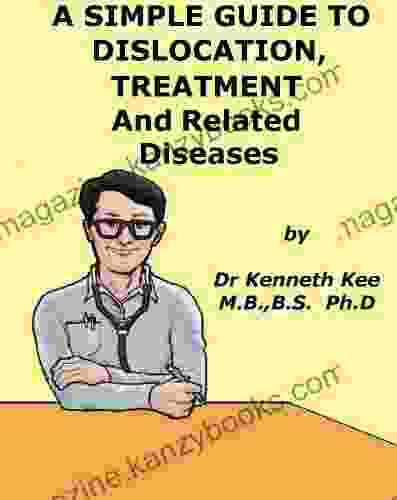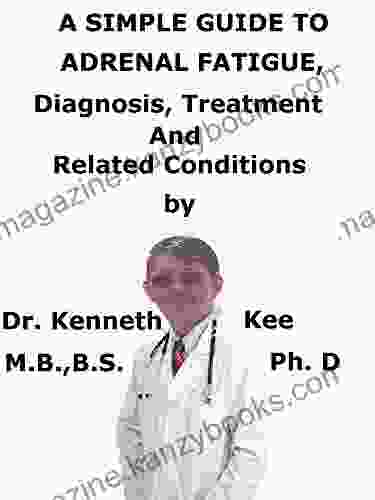The Simple Guide to Dislocations: Treatments and Related Diseases

A dislocation occurs when the bones in a joint are forced out of their normal position. This can happen due to a sudden impact, such as a fall or a car accident, or it can be caused by a more gradual process, such as arthritis.
There are many different types of dislocations, but the most common are:
- Shoulder dislocations: This is the most common type of dislocation, and it occurs when the head of the humerus (upper arm bone) is forced out of the glenoid cavity (socket) in the shoulder blade.
- Elbow dislocations: This type of dislocation occurs when the bones of the forearm are forced out of the elbow joint.
- Hip dislocations: This type of dislocation occurs when the head of the femur (thigh bone) is forced out of the acetabulum (socket) in the pelvis.
- Knee dislocations: This type of dislocation occurs when the bones of the lower leg are forced out of the knee joint.
- Ankle dislocations: This type of dislocation occurs when the bones of the foot are forced out of the ankle joint.
The symptoms of a dislocation can vary depending on the severity of the injury and the location of the dislocation. However, some common symptoms include:
5 out of 5
| Language | : | English |
| File size | : | 380 KB |
| Text-to-Speech | : | Enabled |
| Screen Reader | : | Supported |
| Enhanced typesetting | : | Enabled |
| Word Wise | : | Enabled |
| Print length | : | 92 pages |
| Lending | : | Enabled |
- Pain: This is the most common symptom of a dislocation, and it can be severe.
- Swelling: The area around the dislocated joint will often swell.
- Bruising: The area around the dislocated joint may also bruise.
- Deformity: The dislocated joint may appear deformed or out of place.
- Numbness or tingling: The area around the dislocated joint may feel numb or tingling.
- Weakness: The muscles around the dislocated joint may feel weak.
- Loss of range of motion: The range of motion in the dislocated joint may be limited.
A dislocation can usually be diagnosed based on a physical examination. Your doctor will look for the following signs:
- Pain: Your doctor will ask you to point to the area where you are experiencing pain.
- Swelling: Your doctor will feel the area around the dislocated joint for swelling.
- Bruising: Your doctor will look for bruising around the dislocated joint.
- Deformity: Your doctor will look for any deformity or out-of-place appearance in the dislocated joint.
- Numbness or tingling: Your doctor will ask you if you are experiencing any numbness or tingling in the area around the dislocated joint.
- Weakness: Your doctor will test the strength of the muscles around the dislocated joint.
- Loss of range of motion: Your doctor will test the range of motion in the dislocated joint.
Your doctor may also Free Download an X-ray to confirm the diagnosis.
The treatment for a dislocation will depend on the severity of the injury and the location of the dislocation. However, the most common treatment is closed reduction, which is a procedure in which your doctor manually manipulates the bones back into their normal position.
In some cases, your doctor may need to perform open reduction, which is a surgical procedure in which the bones are surgically repositioned.
After your dislocation has been reduced, your doctor will likely immobilize the joint with a cast or splint. This will help to keep the bones in place while they heal.
Your doctor will also prescribe pain medication to help you manage the pain.
The prognosis for a dislocation depends on the severity of the injury and the location of the dislocation. However, most people who dislocate a joint make a full recovery.
In some cases, a dislocation can lead to complications, such as:
- Nerve damage: The nerves around the dislocated joint can be damaged, which can lead to numbness, tingling, or weakness.
- Blood vessel damage: The blood vessels around the dislocated joint can be damaged, which can lead to bruising or swelling.
- Infection: The dislocated joint can become infected, which can lead to pain, swelling, and redness.
- Osteoarthritis: A dislocation can increase the risk of developing osteoarthritis in the affected joint.
There are no guaranteed ways to prevent a dislocation, but there are some things you can do to reduce your risk, such as:
- Strengthening the muscles around your joints: Strong muscles help to stabilize the joints and make them less likely to dislocate.
- Warming up before exercising: Warming up the muscles around your joints before exercising helps to prepare them for activity and reduce the risk of injury.
- Avoiding falls: Falls are a common cause of dislocations, so it is important to take steps to avoid them, such as wearing proper footwear and being aware of your surroundings.
Dislocations are common injuries that can be caused by a variety of factors. The symptoms of a dislocation can vary depending on the severity of the injury and the location of the dislocation. However, the most common symptoms include pain, swelling, bruising, deformity, numbness or tingling, weakness, and loss of range of motion.
The treatment for a dislocation will depend on the severity of the injury and the location of the dislocation. However, the most common treatment is closed reduction, which is a procedure in which your doctor manually manipulates the bones back into their normal position.
The prognosis for a dislocation depends on the severity of the injury
5 out of 5
| Language | : | English |
| File size | : | 380 KB |
| Text-to-Speech | : | Enabled |
| Screen Reader | : | Supported |
| Enhanced typesetting | : | Enabled |
| Word Wise | : | Enabled |
| Print length | : | 92 pages |
| Lending | : | Enabled |
Do you want to contribute by writing guest posts on this blog?
Please contact us and send us a resume of previous articles that you have written.
 Book
Book Novel
Novel Page
Page Chapter
Chapter Text
Text Story
Story Genre
Genre Reader
Reader Library
Library Paperback
Paperback E-book
E-book Magazine
Magazine Newspaper
Newspaper Paragraph
Paragraph Sentence
Sentence Bookmark
Bookmark Shelf
Shelf Glossary
Glossary Bibliography
Bibliography Foreword
Foreword Preface
Preface Synopsis
Synopsis Annotation
Annotation Footnote
Footnote Manuscript
Manuscript Scroll
Scroll Codex
Codex Tome
Tome Bestseller
Bestseller Classics
Classics Library card
Library card Narrative
Narrative Biography
Biography Autobiography
Autobiography Memoir
Memoir Reference
Reference Encyclopedia
Encyclopedia Steven Cardoza
Steven Cardoza Kelly Link
Kelly Link Soichiro Yomenagi
Soichiro Yomenagi Kevin Oliver
Kevin Oliver Richard Brown
Richard Brown Nicole Burch
Nicole Burch L W Brook
L W Brook Kevin Wolter
Kevin Wolter Kevin L Michel
Kevin L Michel Kelly Rouba
Kelly Rouba Kimberly Nye
Kimberly Nye Philip Burley
Philip Burley Treb Gatte
Treb Gatte Rachel Foley
Rachel Foley Kelsey J Patel
Kelsey J Patel Sana Johnson Quijada
Sana Johnson Quijada Kevin Moore
Kevin Moore Wendie Trubow
Wendie Trubow Taste Academy
Taste Academy Samuel Torvend
Samuel Torvend
Light bulbAdvertise smarter! Our strategic ad space ensures maximum exposure. Reserve your spot today!

 Jackson BlairUnveiling the Hidden History in the Book of Changes: A Journey Through Time...
Jackson BlairUnveiling the Hidden History in the Book of Changes: A Journey Through Time...
 Elias MitchellAdventure, Courage, and Resilience: A Journey with 'The Goat Thief' by Kelly...
Elias MitchellAdventure, Courage, and Resilience: A Journey with 'The Goat Thief' by Kelly... Neal WardFollow ·19.6k
Neal WardFollow ·19.6k Ian McEwanFollow ·8.1k
Ian McEwanFollow ·8.1k Houston PowellFollow ·9.2k
Houston PowellFollow ·9.2k Art MitchellFollow ·17.9k
Art MitchellFollow ·17.9k Barry BryantFollow ·6.6k
Barry BryantFollow ·6.6k Allen ParkerFollow ·14k
Allen ParkerFollow ·14k Natsume SōsekiFollow ·4.9k
Natsume SōsekiFollow ·4.9k Ernesto SabatoFollow ·15.1k
Ernesto SabatoFollow ·15.1k

 Ernesto Sabato
Ernesto SabatoLoving Table: Creating Memorable Gatherings
Gatherings...

 Mark Twain
Mark TwainLifestyle After Cancer: The Facts
Cancer is a life-changing...

 Keith Cox
Keith CoxUnlocking the Nutritional Needs of Individuals with...
Individuals with physical disabilities...

 Rubén Darío
Rubén DaríoHandbook And Guide To Evaluation And Treatment
Empowering Healthcare...

 Andy Hayes
Andy HayesUnveiling the Truth: "Garden Myths" by Robert Pavlis...
The world of gardening is often filled with a...
5 out of 5
| Language | : | English |
| File size | : | 380 KB |
| Text-to-Speech | : | Enabled |
| Screen Reader | : | Supported |
| Enhanced typesetting | : | Enabled |
| Word Wise | : | Enabled |
| Print length | : | 92 pages |
| Lending | : | Enabled |










